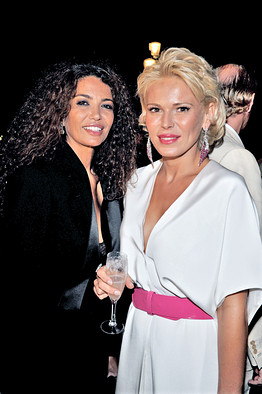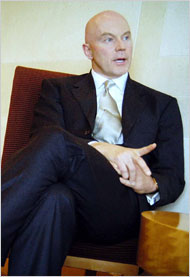Barclays is struggling to re-captalize without going to the British government for funds. Both the New York Times and the Wall Street Journal have fastened on to the backstory of how they’re doing it. Two women with social connections provided the contact with Gulf State wealth, each in a different way. Together their stories provided the real-world mechanics of how capital gets raised in our global village. Neither woman is a banker in any traditional sense.
Barclays is raising money from Qatar and Abu Dhabi. According to the Journal,
Amanda Staveley, a British businesswoman who is chief executive of her own firm, PCP Gulf Invest, helped bring together Abu Dhabi’s Sheikh Mansour Bin Zayed Al Nahyan and Barclays. [ . . . ] Ms. Staveley, little known in London as a deal maker until recently, helped bring Mr. Al Nahyan to the table. Ms. Staveley has been building relationships with Gulf decision makers for some 15 years. Her initial contact came when she was running a restaurant called Stocks some 15 years ago near England’s historic Newmarket stables and met Dubai horse breeders. She and her firm will receive about £40 million if the deal closes and shareholders approve the measure.
Although the WSJ has some wonderful reporting on the other key woman in the deal, Diana Jenkins (pictured above on the right), wife of Barclays’s Middle East head, Roger Jenkins (pictured right) like the fact that bank once held a stake in a swimwear company she had launched, the Times goes a little deeper into the husband-and-wife team’s exploits. Namely, Jenkins owes his close relationship with the head of Qatar’s sovereign weatlh fund to his wife’s social skills:
Mr. Jenkins credits his wife with deepening his understanding of Middle Eastern mores and customs. He is 51 and she is 36. A Bosnian Muslim who escaped the Balkan wars in the early 1990s, she is a prominent socialite with strong celebrity connections. Her friends include Mick Jagger, Paris Hilton and Cindy Crawford, not to mention Sheik Hamad’s wife.
Mr. Jenkins and his wife met while he was teaching finance at City University London. She was one of his students, who focused on the tax shelter strategies that have proved to be so lucrative for Mr. Jenkins and Barclays. In 1999, the year they married, her thesis concerned “minimizing withholding taxes in a multinational corporate structure.”
“She is my consigliere and counselor,” said Mr. Jenkins, who spends most of his life on planes — commuting from his London offices to regular stops in Qatar’s capital, Doha, as well as New York and his home in Malibu, Calif., where his wife has settled. “And she knows a lot of people.”
He hastens to add that while the personal dimension to his relationship with Sheik Hamad was crucial, his wife played no role in negotiations over the Barclays investment.
In truth, both of these stories are driven more by the Times and Journal needing an excuse to add a little juice to the dry business pages. Also, given the new level of competition between the Times and Journal, it’s interesting to see that the Journal ran pictures of Jenkins and Staveley, both attractive blondes, side by side while the Times opted for a shot of the elegant Mr. Jenkins.
Nonetheless, a Cambridge drop out who used her horse-country connections and Abu Dhabi address to score a $60 million finders fee and a jet-setting trophy wife are saving one of Britain’s oldest banks from government control. That’s a story.
>
Sources:
Deadline Looms as Barclays Strives to Draw in Holders
CARRICK MOLLENKAMP and SARA SCHAEFER MUñOZ
Wall Street Journal, November 21, 2008
http://online.wsj.com/article/SB122722705655746143.html
A Friendship’s Paying Off for British Banking Giant
LANDON THOMAS, JR
New York Times, November 22, 2008
http://www.nytimes.com/2008/11/22/business/22bonus.html?ref=business




What's been said:
Discussions found on the web: